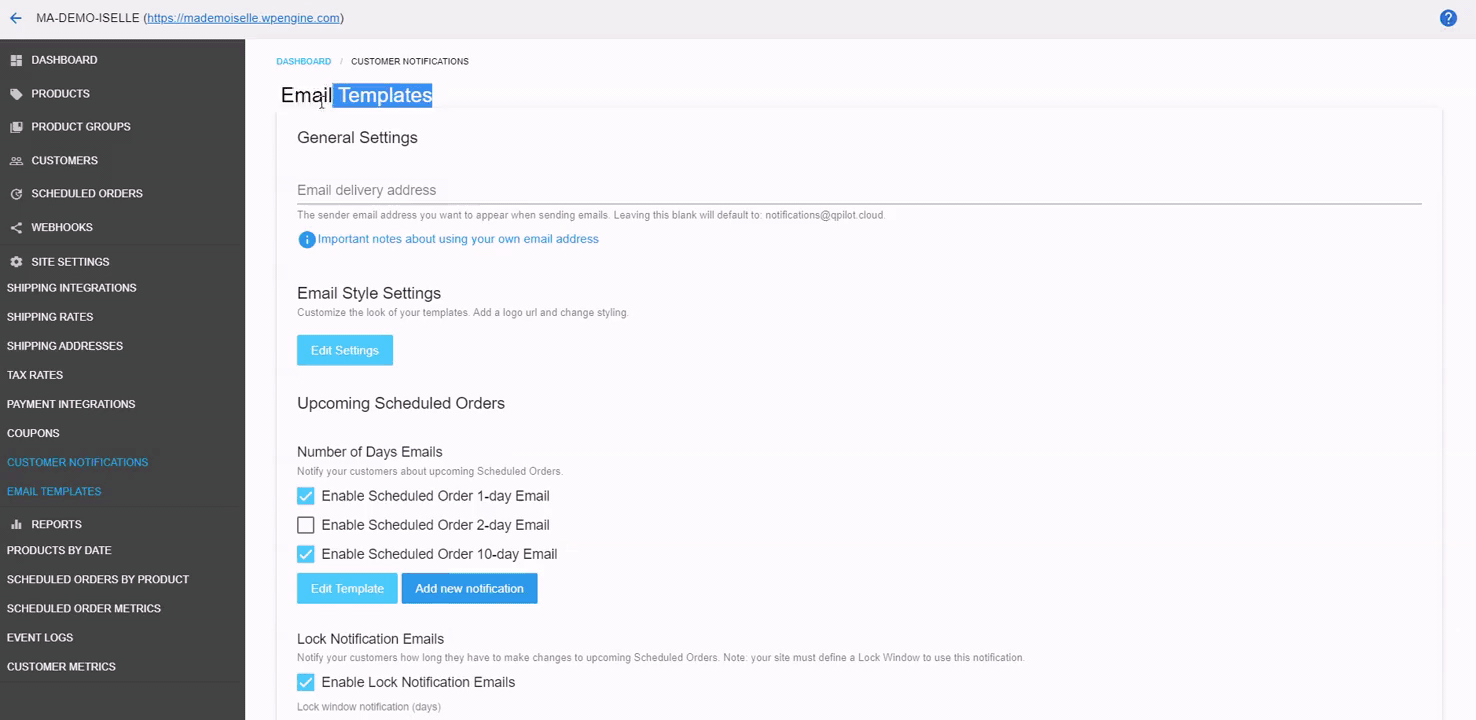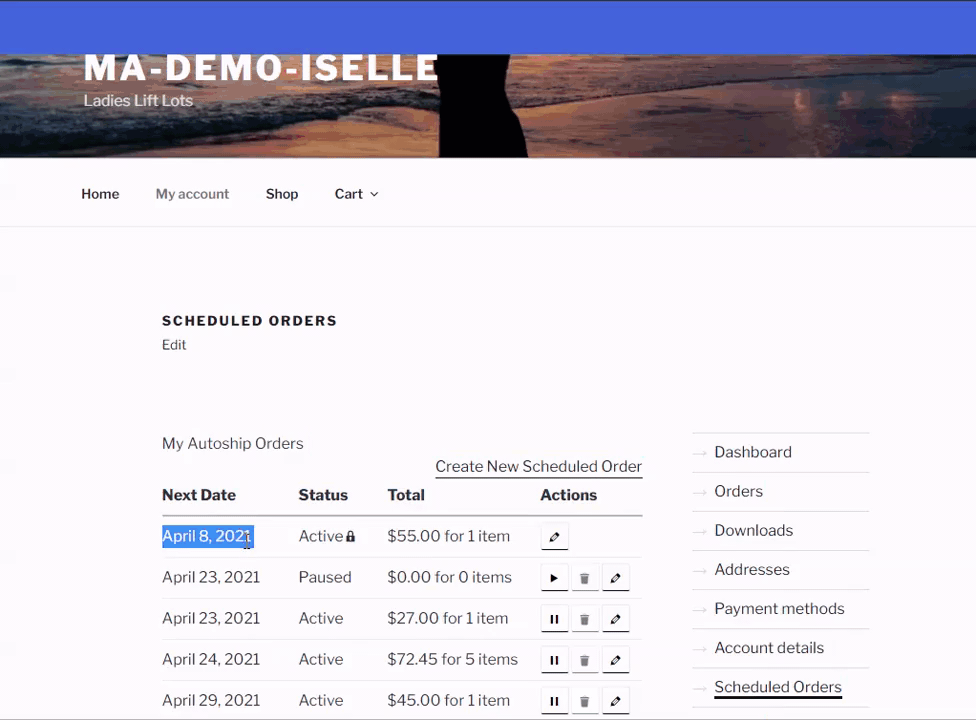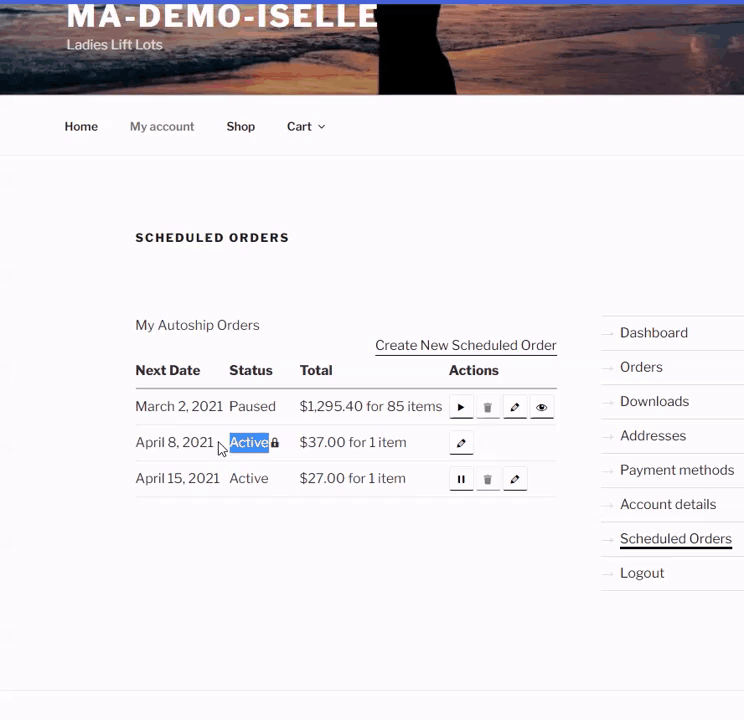Locking Scheduled Orders
What Is a "Lock Window"?
Some merchants may need to prevent changes to Scheduled Orders that are approaching their next occurrence date and are about to process. The Lock Window is defined as the number of days prior to processing a Scheduled Order that customers will be unable to alter their order.
QPilot, offers an optional feature for these types of merchants called "Lock Window". The "Lock Duration" setting can be found in your connected QPilot Site Dashboard > Settings >> Site Settings >> Scheduled Order Processing Settings (Show Advanced Options).
- The Lock Window is the number of days prior to a Scheduled Order's next occurrence date (the day when it will process) that the Customer can no longer make changes to their Scheduled Order.
- The number of days for the Lock Window is known as its Lock Duration. When the Lock Duration (for example "1") is set, customers will not be able to make changes (1) day before their Scheduled Order's next occurrence date.
- Admins may select from no days (blank) or a number of days up to 14
This setting is optional and is disabled by default.
How To Set Up a Lock Window
- Set your lock window in QPilot Merchant Center > Site Dashboard > Site Settings >> Scheduled Order Processing Settings (Show Advanced Options) >> Lock Duration.

Important: If you are using a Lock Window, then you must enable the Lock Notification Email, this will notify customers how long they have to make changes to their Scheduled Order (well before it is Locked).
- This is one of the Customer Email Notifications that is enabled in every connected QPilot Site that uses a Lock Window.
- You can set this lock window email notification in QPilot Merchant Center > Site Dashboard >> Customer Notifications.
- Once enabled, your customers will be automatically notified how many days they have to make changes to their upcoming Scheduled Order well before it enters the Lock Window.
- You can learn more about editing this email template here: Customer Email Notifications.

Enabling the Notification: Step 2
What Happens When a Lock Window is Set?
If a Lock Window is set to '5', then any Scheduled Orders that have a Next Occurrence Date within 5 days will not be able to be changed by the customer.
Customers can still view their Scheduled Order, but if it's scheduled within the Lock Window (Next Occurrence Date within the next 5 days), they will not be able to make any changes to it until the Scheduled Order has processed and the Next Occurrence Date has passed.
What does this look like to the customer?
Customers are shown a notification on the Locked Scheduled Order explaining that they are unable to make changes because the order is scheduled to ship within the Lock Duration
Customers can still view the details of the Scheduled Order but are unable to change any detail of the Scheduled Order until after it has processed.

Locked Order Example
Can Changes be Made to "Locked" Scheduled Orders?
Yes! Admins can still make changes to Scheduled Orders that are Locked by editing the Scheduled Order.
This is the best way to support a customer who may need a quick change to be made before the Scheduled Order is processed and shipped.
What If a Scheduled Order is Resumed While Within Scheduled Order Lock Window?
When the Scheduled Order is paused or has failed, the customer can make changes to the Scheduled Order, but the Scheduled Order cannot be resumed within the Lock Window period.
Instead, the customer will be prompted and notified of the next earliest date outside of the Lock Window.
What if the Scheduled Order fails to process?
If the Scheduled Order fails to process after being locked, the Scheduled Order will be "paused" for your customer.
When the Scheduled Order is paused, the customer can make changes to the Scheduled Order, but the Scheduled Order cannot be resumed within the Lock Duration period. Instead, the customer will be prompted and notified of the next earliest date outside of the Lock Duration period.

Failed and Locked Order Example
Updated over 1 year ago
